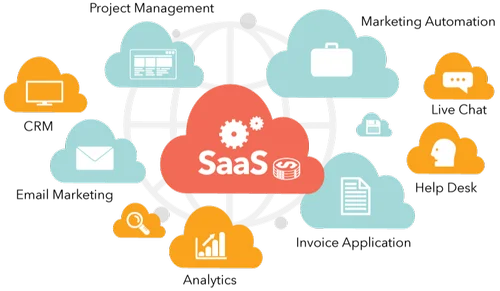Software as a Service – #SaaS – How to make real strategic choices
Software as a service (SaaS) is the most known branch of cloud computing. It is a delivery model in which applications are hosted and managed in the data center of a service provider, paid for on a subscription basis and accessed by a browser via an Internet connection. SaaS is becoming increasingly popular delivery model for a wide range of business applications. Therefore we’ve decided to list, here below, most common advantages and disadvantages of this model.
Expression SaaS, used for nearly a decade:
The term “SaaS” for “Software as a Service”, has been commonly used for nearly a decade, while other expressions of the cloud computing, such as, PaaS – “platform as a service” and IaaS – “Infrastructure as a Service”, are more recent
Platform as a service (PaaS) refers to the on-demand delivery of software tools and services that enable SaaS applications to be coded and deployed, while an Infrastructure as a service (IaaS) relates to on-demand delivery of operating systems, system maintenance, network capabilities, storage spaces, back-up, and virtualized servers.
An infrastructure hosted in a third-party service provider’s data center is called a “public cloud” infrastructure, while the same technology hosted within a company’s network is referred to as a “private cloud” infrastructure. “Hybrid” cloud environments combine both approaches, with some business processes or workloads remaining in-house, while others (perhaps less crucial) are outsourced to public cloud services.
Reason to consider SaaS:
For companies, adopting the SaaS model has many potential benefits, including the following
Cost reduction: it is economically very tempting to trade the heavy costs of installing, maintaining and upgrading an on-site IT infrastructure against the cost of operating a SaaS subscription, including on the short to medium term. However, it is important to be aware of the potential hidden costs associated with adopting SaaS.
Scalability: As your business grows and you need to add more users, rather than investing in additional software licenses and in-house server capabilities, you can adjust your monthly SaaS subscription as needed.
Accessibility: in general, a browser and an internet connection are sufficient to access to a SaaS application, which can then be made available on various desktops and mobile devices.
Upgrade capability: Your cloud service provider takes care of software and hardware updates, which frees your internal IT department from a considerable workload (in theory, the teams can be redeployed on different tasks, such as integration with existing on-site applications).
As all the other Cloud Computing levels a SaaS model include the following advantages

You can easily subscribe to a SaaS offering and pay for the service on a monthly basis using a pay-as-you-go model. As any other Cloud based system, Software as a Service – SaaS offer high scalability, which gives customers the option to access more, or fewer, services or features on-demand. The SaaS provider will automatically perform updates and patches, further reducing the burden on in-house IT staff. Since SaaS applications are delivered over the Internet, users can access them from any Internet-enabled device and location. A SaaS software is already installed and configured. In a couple hours you can have the application ready for use. This reduces the time spent to install and configure and completely removes any issues related to these aspects. Hardware, software license and support costs are included in the SaaS solution making it easier to estimate the overall cost in advance compared to the traditional model.
Build Your Dream Project With Professional Developers
Are you looking for the best Software Development, Web Design & Development, Mobile App Development and Digital Marketing company in Delhi, India
